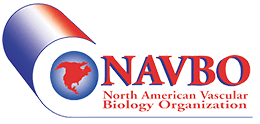
Wnt/ß-catenin signaling, mechanotransduction and lymphatic vascular development
October 10, 2019
SATHISH SRINIVASAN, PH.D.
Associate Member
Cardiovascular Biology Research Program
Oklahoma Medical Research Foundation
Took place on October 10, 2019 at 1:00pm EDT
SATHISH SRINIVASAN -
Dr. Srinivasan trained as a post-doctoral fellow in the lab of Dr. Guillermo Oliver, a pioneer in the field of lymphatic vascular development. Dr. Srinivasan is currently an Associate Member at the Cardiovascular Biology Research Program at Oklahoma Medical Research Foundation (OMRF). The major goals of his lab are to: A) Develop approaches to gain a clearer understanding of lymphatic vascular development. B) Generate mouse models of human lymphedema and identify the anatomical, developmental and mechanistic defects in these mice. C) Develop innovative treatments for lymphedema and the associated cardiovascular disorders. Their original discoveries include: 1) Demonstration of venous endothelial cells as the major source of lymphatic vasculature. 2) Discovery of Coup-TFII as the activator of PROX1 expression. 3) Identification of a positive feedback loop between PROX1 and VEGFR3. 4) Revealing the stepwise morphogenesis of lymphovenous valves, which regulate lymph return to blood circulation. 5) Identification of Wnt/ß-catenin signaling as the regulator of lymphatic vessel maturation and valve development.
PRESENTATION -
The lymphatic vasculature collects interstitial fluid and digested lipids and returns them to blood circulation. Defects in lymphatic vasculature cause lymphedema, a disease characterized by the swelling of hands and legs. The health consequences of lymphedema include inflammation, atherosclerosis, heart attack, pain, obesity, fibrosis, high blood pressure and angiosarcoma. Millions of people suffer with lymphedema. However, there are currently no treatments for this debilitating disease. A better understanding of the mechanisms that regulate lymphatic vascular development might advance the development of new therapies for lymphedema. I will discuss our recent discovery of Wnt/ß-catenin signaling as a critical regulator of lymphatic vascular development. I will also discuss the role of shear stress and its relationship with Wnt/ß-catenin signaling in the lymphatics.
The following papers will be discussed during this presentation:
